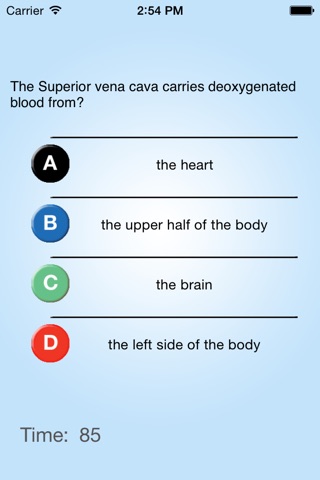
AS Biology app for iPhone and iPad
Developer: Steven Curtis
First release : 06 Aug 2014
App size: 28.39 Mb
Biology AS full revision guide
Contains readable sections to help you for every section of the AQA syllabus (also suitable for other exam boards, please see the list below). Designed for IOS 7, this interactive study guide is a best in class learning system including interactive quiz and study sections.
Unit 1
3.1.1 Disease may be caused by infectious pathogens or may reflect the effects of lifestyle Pathogens
Lifestyle
3.1.2 The digestive system provides an interface with the environment. Digestion involves enzymic hydrolysis producing smaller molecules that can be absorbed and assimilated.
The Digestive system
Proteins
Enzyme action
Enzyme properties
Carbohydrate digestion
3.1.3 Substances are exchanged between organisms and their environment by passive or active transport across exchange surfaces. The structure of plasma membranes enables control of the passage of substances across exchange surfaces. Cells
Plasma membranes
Diffusion
Osmosis
Active transport
Absorption
Cholera
3.1.4 The lungs of a mammal act as an interface with the environment. Lung function may be affected by pathogens and by factors relating to lifestyle. Lung function
The biological basis of lung disease
3.1.5 The functioning of the heart plays a central role in the circulation of blood and relates to the level of activity of an individual. Heart disease may be linked to factors affecting lifestyle. Heart structure and function
The biological basis of heart disease
3.1.6 Mammalian blood possesses a number of defensive functions. Principles of immunology
Unit 2
3.2.1 Living organisms vary and this variation is influenced by genetic and environmental factors. Investigating variation
Causes of variation
3.2.2 DNA is an information-carrying molecule. Its sequence of bases determines the structure of proteins, including enzymes. Structure of DNA
Genes and polypeptides
DNA and chromosomes
Meiosis
3.2.3 Similarities and differences in DNA result in genetic diversity. Genetic diversity
3.2.4 The variety of life is extensive and this is reflected in similarities and differences in its biochemical basis and cellular organisation. Haemoglobin
Carbohydrates
Cells
3.2.5 During the cell cycle, genetic information is copied and passed to genetically identical daughter cells. Replication of DNA
Mitosis
Cell cycle
3.2.6 In complex multicellular organisms, cells are organised into tissues, tissues into organs and organs into systems. Cell differentiation
3.2.7 Factors such as size and metabolic rate affect the requirements of organisms and this gives rise to adaptations such as specialised exchange surfaces and mass transport systems. Size and surface area
Gas exchange
Mass transport
The blood system
The passage of water through a plant
3.2.8 Classification is a means of organising the variety of life based on relationships between organisms and is built round the concept of species. Principles of taxonomy
3.2.9 Originally, classification systems were based on observable features but more recent approaches draw on a wider range of evidence to clarify relationships between organisms. Genetic comparisons
DNA
Proteins
Behaviour
3.2.10 Adaptation and selection are major components of evolution and make a significant contribution to the diversity of living organisms. Antibiotics
Genetic variation in bacteria
3.2.11 Biodiversity may be measured within a habitat. Species diversity
Index of diversity


